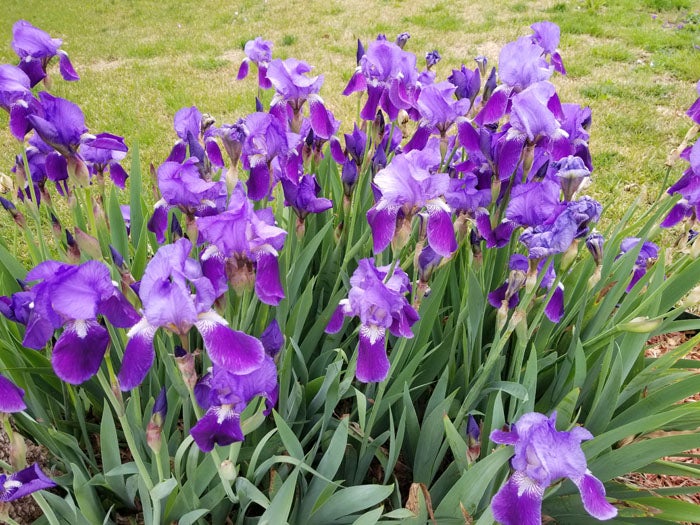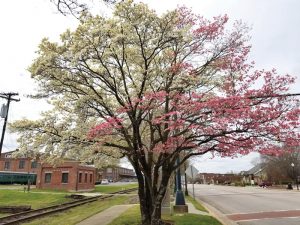Two-tone dogwood and early tent caterpillars
Published 12:00 am Friday, April 13, 2018

- Submitted photo Bearded iris like full sun and well drained soil. Two wet, and they will rot.
Warm weather has finally arrived and the dogwoods are at their peak. Many people will be working outdoors this weekend in their landscapes and gardens. Be aware when planting tender annuals and perennials that unseasonable frosts can reach into late April. Many people are still pressing forward with their chores and asking gardening questions. Below are a few questions posed by homeowners.
Question: There is a tree in Spencer near the Transportation Museum that has both pink and white blooms. Did they plant two separate trees in the same spot?
Answer: Maybe, but it was most likely a grafted or budded tree. The stock or bottom half of the tree grew out as well as the grafted pink scion, along with the graft. Removing the limbs from the bottom half (stock) would have produced only a red tree. However, the lower limbs were not removed and therefore you have virtually two trees on one stem. Notice how the white blooms dominate over the pink blooms. Often, the stock part of the graft is most vigorous and overtakes the grafted portion.

Submitted photo This pink and white dogwood near the N.C. Transportation Museum in Spencer is the result of grafting a pink specimen to the white one.
Question: Something is building a web in my plum tree. Can you tell me what this is and how to control it?
Answer: It is most likely eastern tent caterpillars. The larva spins ugly white webs in the crotches of shade trees, especially those in the Prunus sp. (cherry, plum, peach, etc.) The larva ventures out during the day to feed and returns to the protective web in the evening. Eastern tent caterpillars normally do not kill trees, but are quite a nuisance, with reports of caterpillars crawling over porches, decks and even trying to crawl indoors. The best way to deal with these insects is to physically remove the web and expose larva to natural predators such as birds and other insects. Don’t burn the infested webs while on the tree. Biological pesticides containing BTs such as Dipel or Thuricide will also control them.
Question: My friend is a Master Gardener and has the most beautiful bearded irises. For some reason, after a couple of years, mine all die. I keep plants watered and mulched. What do I need to do to grow pretty irises?
Answer: Bearded irises need full sun to produce blooms. They also need well drained soils. Avoid planting them in poorly drained soils and avoid over irrigating. Iris rhizomes that have constant moisture from over irrigating or poorly drained soils develop bacterial rot and will eventually die out.
Darrell Blackwelder is the retired county Extension director with horticulture responsibilities with the North Carolina Cooperative Extension Service in Rowan County.




